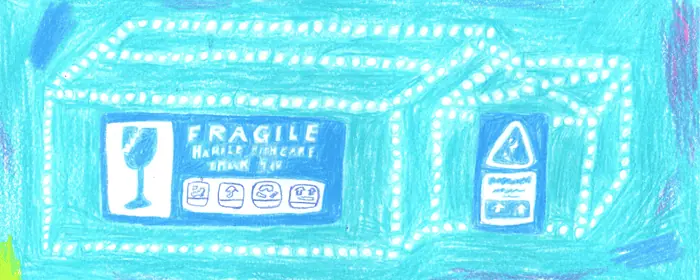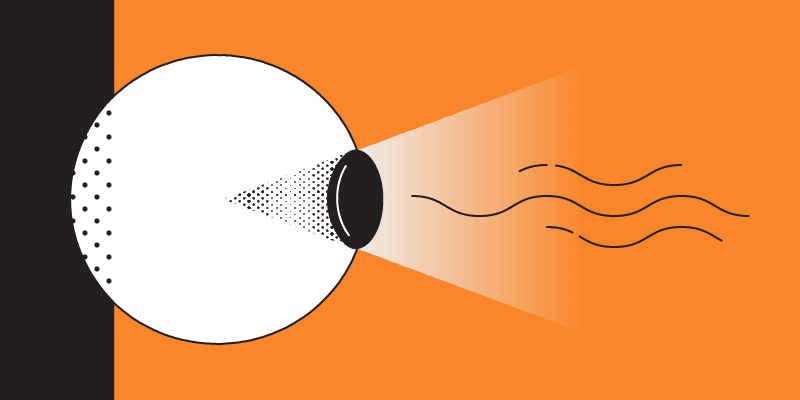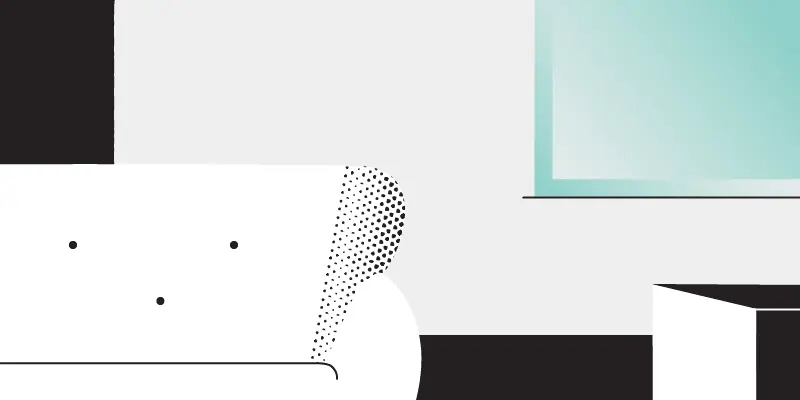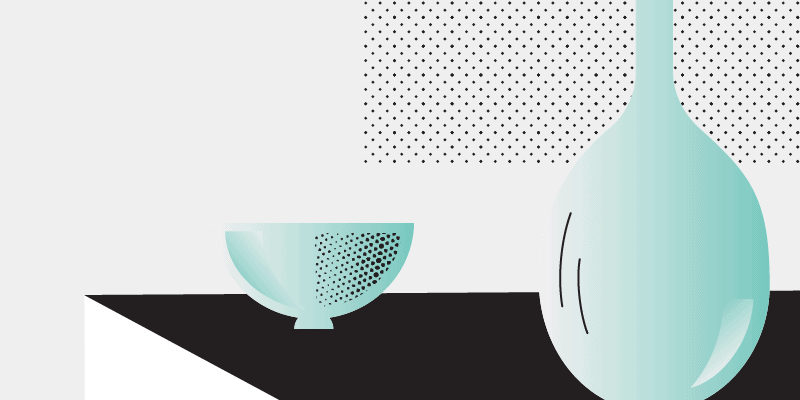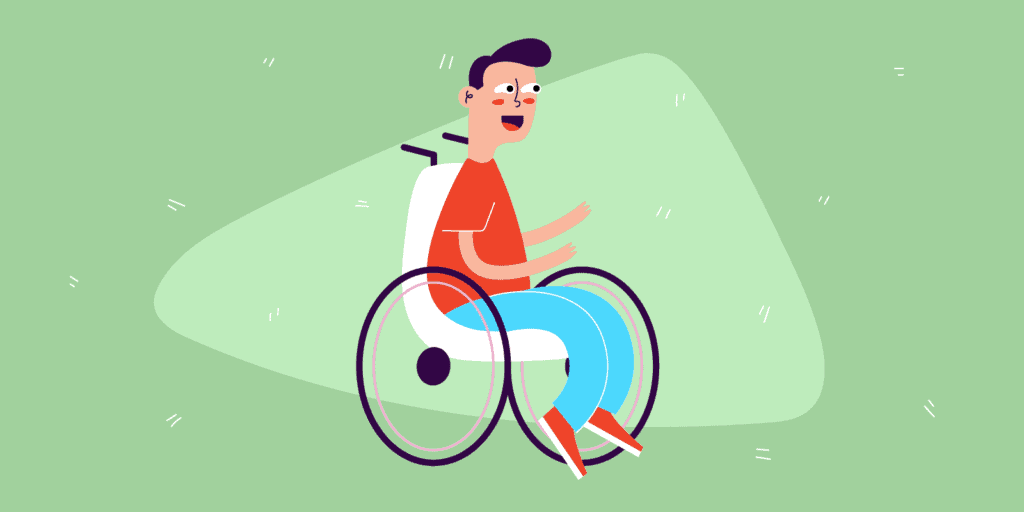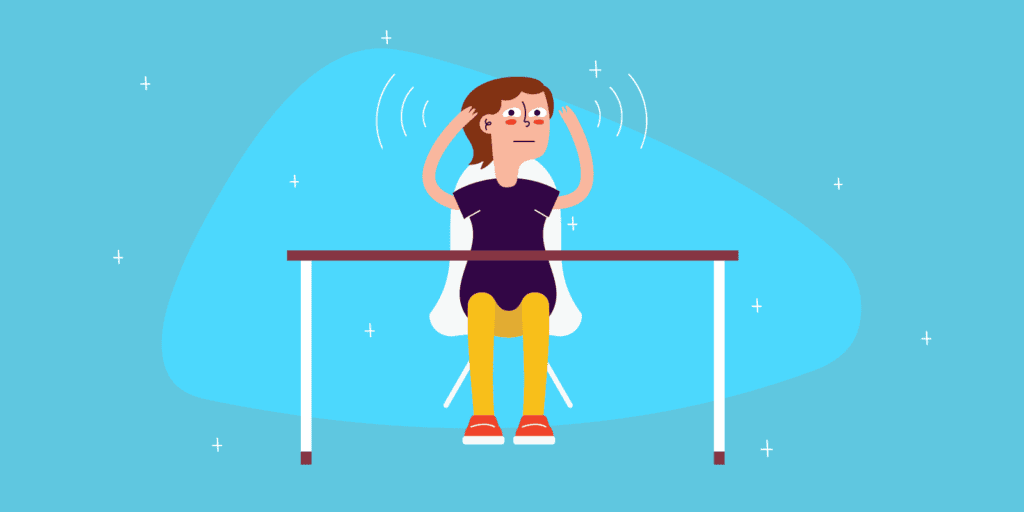Anyone who’s ever moved knows that it takes some careful planning and preparation for things to go smoothly (especially if you’re moving long-distance). For those who are visually impaired or blind, this process might seem especially intimidating.
But it doesn’t have to be if you know what steps to take. Just ask Daniel Hodges, a resident of Springfield, Missouri and president and co-founder of Peaces of Me Foundation. Hodges is a blind man who has moved dozens of times all around the country, learning must-know info along the way.
Here’s what you can do as a blind person to ensure your move is safe and successful.
1. Find someone to be your moving point-person
As anyone with a physical impairment knows, having a friend, assistant, or family member around can help tremendously. This is vital for a move.
Specifically, your “moving person” can help out with packing, driving, paperwork, running errands or anything else you need. In fact, Hodges says that when he’s moving, he’ll have someone travel to his home to help out when the date of the move approaches. He covers expenses such as flights and meals, and says that in terms of cost, “I’m usually still coming in several hundreds, if not thousands, of dollars less than what the moving companies charge (for the same services).” He adds that it may not be the best option for everyone, but it’s still a good option.
(Also, if you have a guide dog, read up on how to effectively move with a dog!)
2. Choose your new destination wisely
Sometimes we have to move for reasons out of our control, such as starting a new job or attending school. But when you have the choice, it’s important to do some digging into the lifestyle and overall culture of a city before committing to a move—especially if you’re visually impaired.
Get Help Unloading Your Rental Truck
See prices for movers by the hour—instantly.
Read real customer reviews.
Easily book your help online.
Many of Hodges’s moves were the result of finding adequate medical care for his two children, both born with a rare eye cancer inherited from their mother, who is also blind. Their second daughter was born at a hospital in Colorado, where the medical staff “…could not and would not believe that blind parents were capable of raising a child,” despite the fact that they had clearly demonstrated otherwise.
When they were finally allowed to leave the hospital and return home, they found a note from child protection services waiting on their door.
Hodges attributes this discrimination to the common, negative attitudes found in the area in which his family resided. “We’ve learned the hard way, where you move to…really can play a pivotal role in your experience as a blind person,” Hodges said.
“…Medicaid benefits for vision impairments also vary greatly state-to-state, as do Supplemental Security Income (SSI) benefits.”
While that may be an extreme example, it shows how challenging it can be to navigate a new city as a blind person, even beyond the logistics of the actual move; it extends to necessary access to healthcare and helpful medical staff.
Hodges also points out that Medicaid benefits for vision impairments also vary greatly state-to-state, as do Supplemental Security Income (SSI) benefits. Even equal employment laws are implemented differently in every state, “So one’s ability to get a job can vary greatly depending on what part of the country they’re in,” he explains. (Click here to apply for SSI benefits, or call 1-800-772-1213 or TTY 1-800-325-0778 if you are deaf or hard of hearing.)
The safety and accessibility of a city are also important. When Hodges moved to the east coast to attend law school, he wanted to live somewhere that was affordable, safe, and easy to get around. He settled on an apartment in Baltimore that was two blocks from campus.
“I had to figure out where there are stores, restaurants, recreation…because Uber and Lyft and Instacart…have made things a lot easier, but they haven’t completely wiped out the need to be able to occasionally go out and grab something for yourself,” said Hodges.
3. When considering movers, be upfront about your impairment (and shop around)
Even if there isn’t anyone available to assist you with your move, it’s still borderline essential that you hire movers.
It’s helpful to speak directly with several companies to find out if they have experience working with customers who have impairments and disabilities. As professionals, they will understand the unique challenges you face when moving. Remember that any mover you hire should also be licensed and bonded, highly reviewed on websites such as the Better Business Bureau, and have plenty of references.

It’s also important to gather several quotes before making a final decision, no matter how good they say they are. Moving can be expensive, especially if you’re moving across state lines. In fact, it can cost around $5,000 for an interstate move that spans a distance of more than 1,000 miles, according to Consumer Affairs. However, that number can vary quite a bit based on exactly how far you’re moving and what types of services are provided by the movers.
Trusted third-party sites like HireAHelper can help with finding the right moving company for you. On a smartphone or at a computer, you can sort available movers with verified reviews by their quality and price, or you can call HireAHelper at 1-800-995-5003 any day of the week to have them figure out the best fit for your budget—all for free.
4. File for a moving grant for people with vision impairments
Since moving costs can add up quickly, it’s helpful to look into any discounts or grants for which you may qualify. Blind citizens might be able to get a relocation grant through the federal government, which can offset a portion of your moving expenses. On top of that, many other nonprofit organizations provide grants for various uses.
Here are a few places you can check for moving grants for people with severe vision impairments or blindness:
- ADAPT
- The Administration for Community Living (ACL)
- Association of University Centers On Disabilities (AUCD)
- Grants.gov
- National Institute on Life Planning for People with Disabilities (NIDILRR)
Many moving companies themselves also offer a variety of discounts for certain subsets of people, such as veterans, teachers, college students, union members, and more. You may also qualify for a discount if you’re a senior or belong to a club such as AAA or AARP. Be sure to ask about what types of discounts your movers offer!
Moving far away?
Do it cheaper.
MovingPlace can save up to 40% compared to traditional interstate moving companies. Click here to learn how.
5. An inventory list is extra important
Once you’re ready to start prepping for the move, it’s a good idea to take an inventory of everything that will be packed and moved to the new location. A simple Google doc with all your stuff listed on it (transcribed by voice or typed) is all you need. Even better, put each item on the list as it’s placed into a box.
Always have this on you during the move. Make sure your movers are intimately familiar with your list. Having this list in writing will ensure that nothing gets lost or broken (or if it somehow does, you can hold your movers accountable). Be sure to do this after you’ve decluttered so you know what you’re keeping versus what was tossed or donated. And if you have a point person, they can use that list to help confirm all your things have arrived.
Also, have your inventory handy when you do the final walkthrough with your movers (more on that later).
6. If possible, make a ‘furniture placement guide’ for your new place ahead of time
To help you accelerate the time it takes to become acquainted with your new place, it’s a huge help to start developing a mental map of your new home before you even settle in. If at all possible, decide where the main pieces of furniture will be placed not during, but ahead of your move. This can be physically mapped out for the movers with as little as a napkin and a pen (especially if you have a point person to help).
If you want to get into the nitty-gritty of setting up your home, check out this detailed guide for how to modify a home for the blind or visually impaired.
7. Sort moving boxes by room, not by what’s inside
The time and care you put into packing will determine how easy it is to unpack and get settled into your new home. Which is to say, don’t haphazardly pack random items into boxes and hope to sort it all out later.
“…no matter which state you live in, you cannot be legally discriminated against or be asked discriminatory questions by the landlord.”
Instead, come up with a simple packing system. Label boxes by room instead of contents (but you should still inventory what’s inside each box). Make sure others can read your labels, so your personal helper or movers know where to put everything.
Consider using a numbering system, with each room represented by one number (e.g., living room = 1, dining room = 2, etc.), so it’s easier and quicker to label and unload. Also, whenever possible, keep your boxes small and less than 50 pounds before you create a new one, so they aren’t a hassle to move around.
8. If it would be helpful, use a braille label maker (but keep your essentials nearby)

Packing and unpacking is a chore no matter who you are. One tool you don’t need to do without, however, is a simple braille label maker. These are light, handheld devices for you or a helper that imprint braille onto a sticky piece of vinyl. This may be a great aid no matter if you have move help, or are doing it solo. You can order one of these for usually around $25-$35.
Also, remember the process of moving could take days, depending on how much stuff you have and how far you’re going. You don’t want to be stuck without your laptop charger or toothbrush until everything gets unpacked at your new destination, so pack an essentials bag that you can keep with you at all times.
9. Use your inventory list during the final walk-through with your movers
Once your belongings have been transported to your new home and unloaded/unpacked, it’s important to do a final walkthrough with your movers. Be sure that everything from your inventory list is accounted for. If you need help finding a particular item, have your movers assist before they leave. Or if you need the furniture adjusted (or changes have been made to your furniture placement guide you might have made), make sure they help you get everything in the right place before heading out.
10. Know your rights
The Fair Housing Act puts protections in place for people with disabilities, and it’s important that both you and your landlord (if you’re renting) know what they are. For example, no matter which state you live in, you cannot be legally discriminated against or be asked discriminatory questions by the landlord. You also have the right to request certain accommodations associated with your impairment, such as owning a service animal or getting preferential parking.
If you feel as though your rights under the Fair Housing Act have been violated, you should file a complaint with the Fair and Equitable Housing Office.



